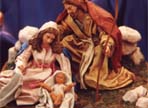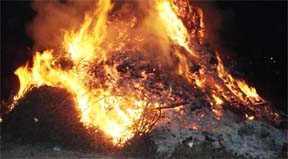When is the Exhibition of Cribs in Lecce
 It’s from 8th to 24th December. It is generally set in the ex convent of the Teatini (on the first floor). Here you can admire beautiful cribs of papier-mâché and terracotta, very realistic in the details; moreover you can buy the so called “pupi” for your domestic cribs, made by the artisans who show their objects here. It is a brilliance of colours and lights; the works are carefully made, especially those showing scenes of domestic life. Really you will come back to the times when Jesus was born. It’s from 8th to 24th December. It is generally set in the ex convent of the Teatini (on the first floor). Here you can admire beautiful cribs of papier-mâché and terracotta, very realistic in the details; moreover you can buy the so called “pupi” for your domestic cribs, made by the artisans who show their objects here. It is a brilliance of colours and lights; the works are carefully made, especially those showing scenes of domestic life. Really you will come back to the times when Jesus was born.
When is the “Fire Festival” in Zollino?
It embodies symbols, messages and metaphors of people who still believe in old traditions and the meaning of fire.  It was started in 1978 by Giovanni Pellegrino, a funny citizen of Zollino, who wanted to keep alive some old traditions, such as the habit of putting small bonfires, the so called “focareddhe”, on the street corners during winter evenings. This festival has no religious meaning but since then it has become a grat folk event, on 27th and 28th December, with a high bonfire, lit up together with the emigrants come back home for Christmas time. Music, dance, buskers, typical dishes liven up these magical evenings; it has also a cultural side because people play a comedy, “Il processo alla striara”, recalling the witch hunt in the Middle Ages. The “striara” in fact is the dialect name for witches, for women who turn into cats on the full moon nights and dance on the beach. It was started in 1978 by Giovanni Pellegrino, a funny citizen of Zollino, who wanted to keep alive some old traditions, such as the habit of putting small bonfires, the so called “focareddhe”, on the street corners during winter evenings. This festival has no religious meaning but since then it has become a grat folk event, on 27th and 28th December, with a high bonfire, lit up together with the emigrants come back home for Christmas time. Music, dance, buskers, typical dishes liven up these magical evenings; it has also a cultural side because people play a comedy, “Il processo alla striara”, recalling the witch hunt in the Middle Ages. The “striara” in fact is the dialect name for witches, for women who turn into cats on the full moon nights and dance on the beach.
Other events in December: The "Santa Lucia" fair in Scorrano - The "Sagra della Pittula" in Specchia, Surano, Tiggiano - Beautiful and evocative living and artistic Nativity Scenes all over the territory
| |